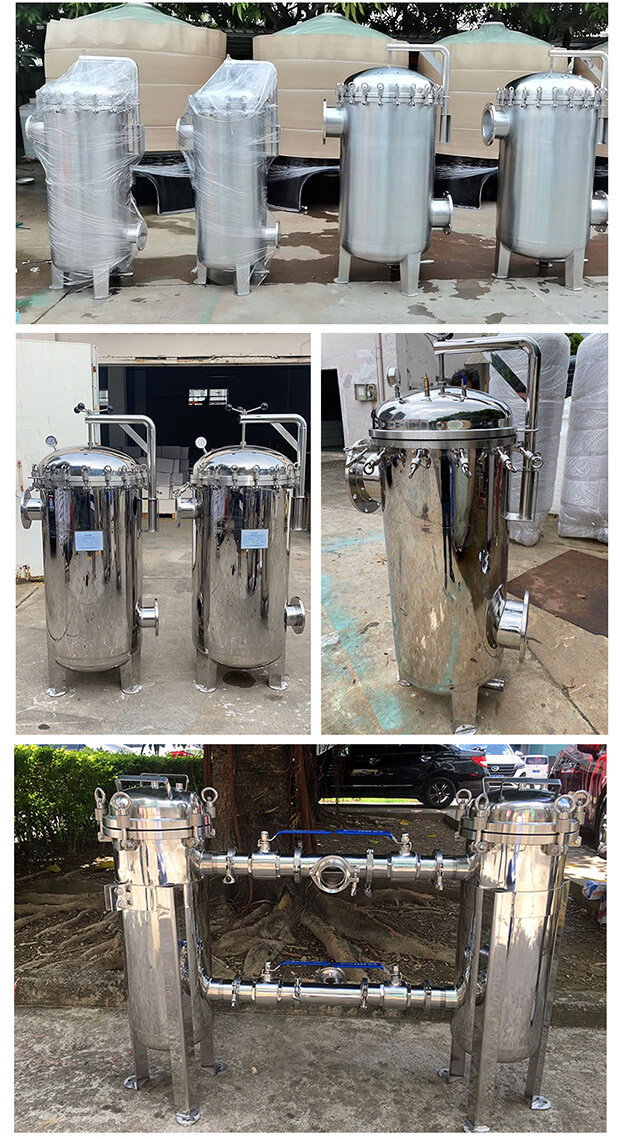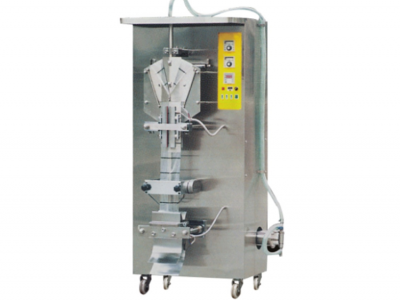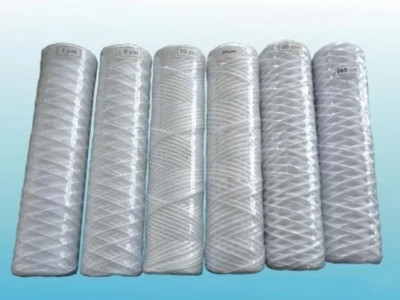Daily Use and Maintenance
1. Daily Use
Regularly check the pressure difference between the inlet and outlet of the working filtration system. When the pressure reaches 0.05-0.1 MPa, replace the filter bag promptly to prevent excessive pressure difference from causing the filter bag to rupture and damaging the support grid.
2. Correctly Opening the Filter Cover After Filtration
Warning: Do not open the cover when the bag filter is under pressure, as residual liquid may spray out, causing liquid loss and personal injury. Follow these steps strictly:
1. Close the input valve; if there is pressure at the outlet, close the output valve.
2. Ensure the exhaust valve’s connected pipe leads to a safe area or a suction inlet, especially when handling toxic or corrosive liquids, then open the exhaust valve.
3. Check the pressure gauge to confirm the internal pressure is 0; at this point, the bag filter is separated from the pipeline system.
4. Open the discharge valve to drain the residual liquid from the filter, then close the discharge valve. This discharge process can be completed with pressurization.
5. Unscrew the lifting cap on the cover and rotate the cover. Multi-bag filters may need to turn at a certain angle.
3. Replacing the Filter Bag
1. Correctly open the bag filter cover.
2. Place the cover steadily, use the locking wrench to loosen the compression ring, and carefully remove the filter bag.
3. Insert a new filter bag, referring to the installation process.
4. Monitoring Filtration Quality
With stable input pressure, filtration quality is closely related to the pressure difference inside and outside the filter bag. If the pressure difference is too large, the filter bag’s pores may be clogged, reducing filtration speed. It is recommended to regularly check the pressure difference and decide on the filter bag replacement time based on the pressure difference indicated by the gauges before and after the filter. When the pressure difference reaches 0.05-0.1 MPa, replace the filter bag promptly to avoid rupturing and compromising filtration efficiency. If the pressure difference suddenly decreases, stop filtration immediately and check for leakages.
5. Pressurized Discharge of Residual Liquid
When filtering high-viscosity liquids, use the exhaust valve to introduce compressed air to accelerate the discharge of residual liquid, shortening the waiting time. Note: The air pressure used for pressurized discharge must not exceed the working pressure of the filter.
Steps:
1. Close the input valve.
2. Open the intake valve.
3. Introduce gas into the bag filter to pressurize and discharge the remaining liquid.
4. Confirm that there is no liquid outflow at the outlet, then close the intake valve.
5. Slowly open the exhaust valve, directing any residual liquid to a safe area.
6. After the compressed air is fully discharged, close the exhaust valve. At this point, there will be no pressure inside the filter, and the cover can be opened.
6. Cleaning the Bag Filter
If you continue to filter the same liquid, cleaning is not required. However, when filtering other types of liquids, the machine needs to be cleaned before use.
7. Maintenance and Replacement of O-rings
Maintenance: When installing, place the O-ring into the O-ring groove properly to avoid inappropriate squeezing that may deform the O-ring. When not filtering, remove the O-ring and wipe it clean, as residual liquid may solidify and adhere to its surface, reducing its sealing capability.
Replacement: If the O-ring is aged or damaged, replace it promptly. Ensure that the replacement O-ring is of the same model.




